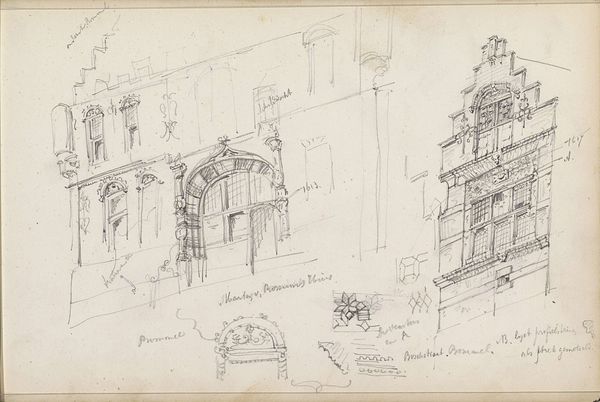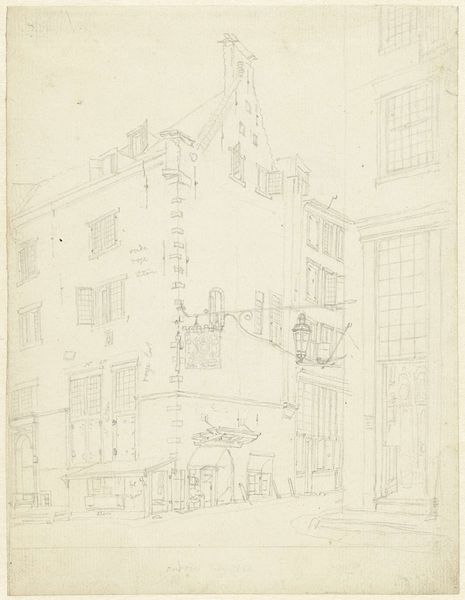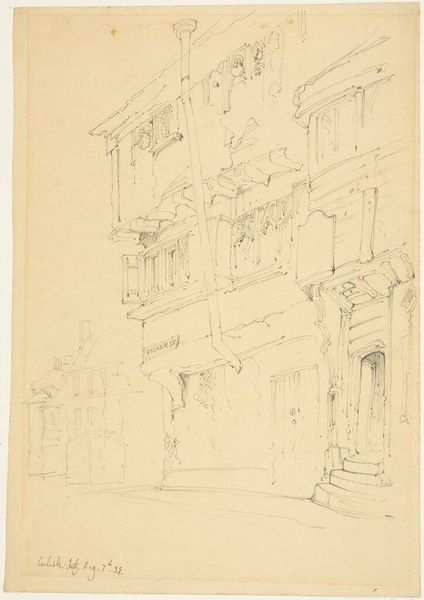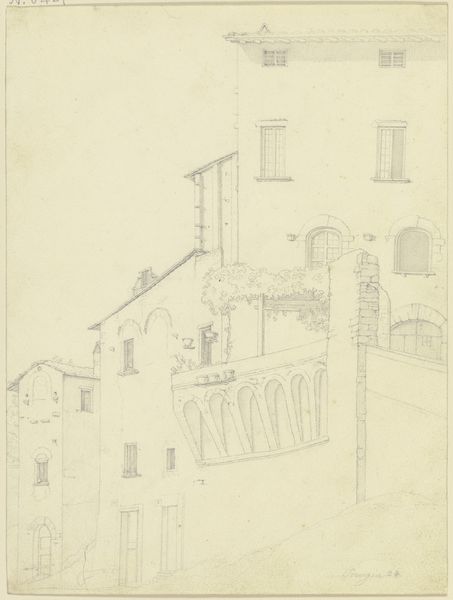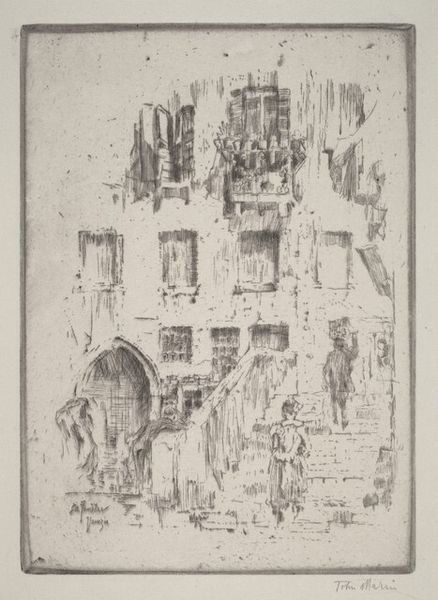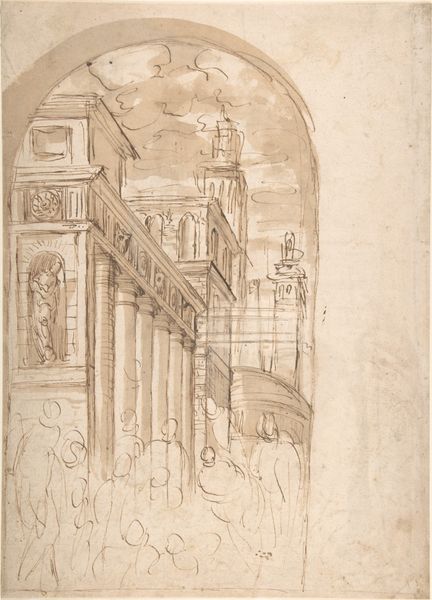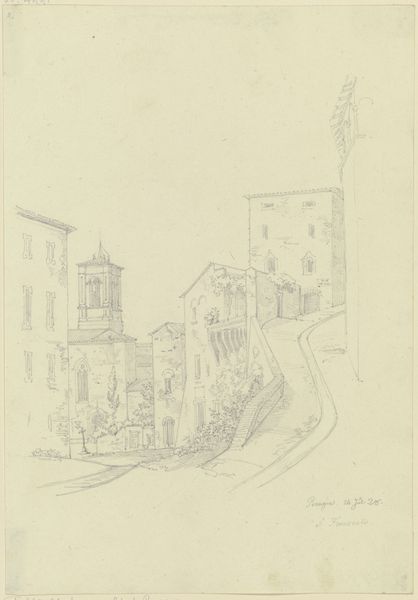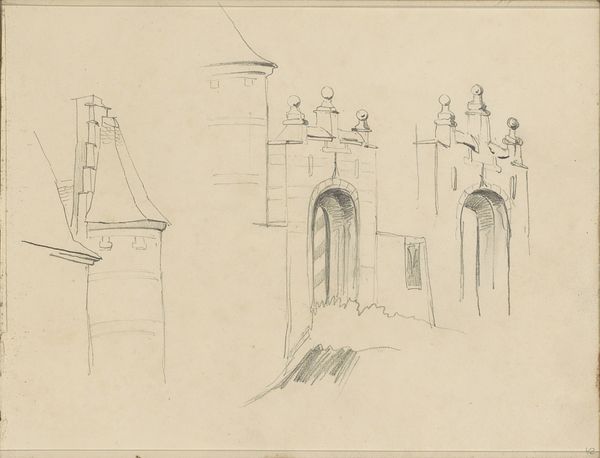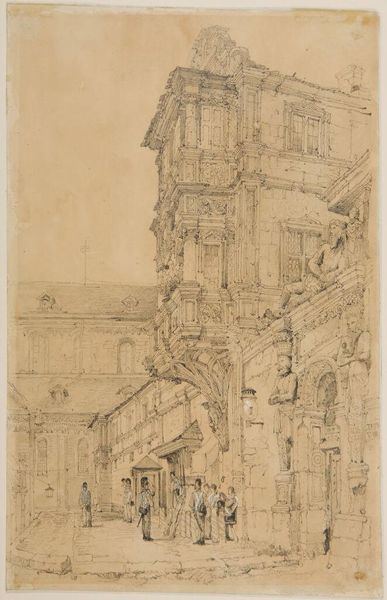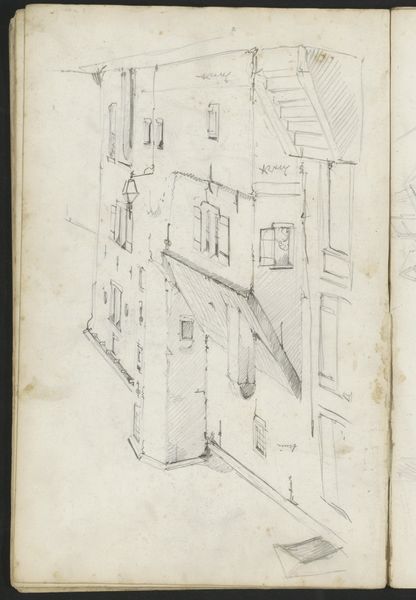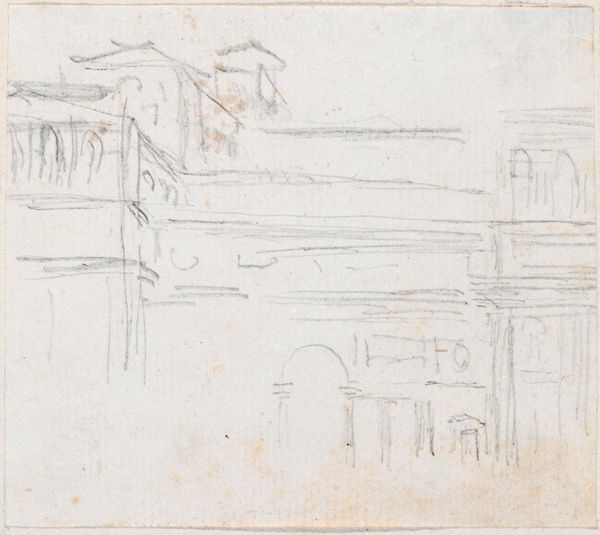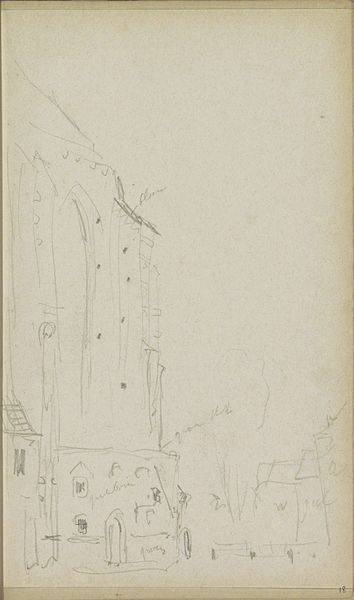
Straße in Rom mit einem Torbogen und dem Kirchturm von Santa Sabina 1818
0:00
0:00
drawing, plein-air, ink, pencil, graphite, architecture
#
drawing
#
plein-air
#
landscape
#
ink
#
romanticism
#
pencil
#
graphite
#
cityscape
#
architecture
Copyright: Public Domain
Curator: Before us, we have Heinrich Hübsch's 1818 graphite, ink, and pencil drawing, "Street in Rome with an Archway and the Bell Tower of Santa Sabina," currently held at the Städel Museum. Editor: There's a compelling sketch-like quality. A deliberate rawness, almost as though the artist is mapping not just a place but also a moment in time. Curator: Indeed. Hübsch was deeply interested in the spatial relationships. Look at how he establishes depth, drawing the eye toward the architectural structures that both divide and unite the composition. Semiotically, the archway functions as both threshold and frame. Editor: The arch is definitely evocative. Arches frequently represent transition, and of course triumph – a gateway to a better place or a memory of classical victory. Here though it feels almost... humble, absorbed back into ordinary life. It's interesting, how this architectural flourish, so suggestive of the monumental, is presented amid details of routine existence – ordinary people and even a stray pig. Curator: The interplay of precise lines and fainter impressions emphasizes the solid geometry of the buildings. This Romantic-era architect used precise structures like ink on the tower but softer methods such as pencil and graphite for less focused objects to build the scene, literally and figuratively. Editor: That contrast underscores your point, though to me it hints at a more profound contrast – between enduring monuments and the ephemerality of life. The architectural motifs are constant. The pig, man with lute, lady, and even the rider can pass by. Yet the monuments stand the tests of time as Rome existed before this exact moment. It speaks of memory, longing and the inevitability of change set against that eternal backdrop. Curator: So we are perhaps witnessing an architectural memento mori? Editor: Exactly. Which plays against what would usually see in cityscape depictions, particularly of places like Rome. They frequently stand in as symbolic markers of power and historical record-keeping. But in Hübsch’s interpretation here, it's hard to tell. He isn't trying to rewrite or restage history like many history or mythology painters would. It’s so refreshing, almost down-to-earth in its interpretation. Curator: Thank you, that was really quite an exploration through art history, but the formal analysis does leave a lot to consider in this piece. It’s just stunning the spatial structures as you follow Hübsch’s drawing style from beginning to end. Editor: And sometimes we discover meaning not in grand proclamations, but in a pig wandering down a Roman street.
Comments
No comments
Be the first to comment and join the conversation on the ultimate creative platform.
